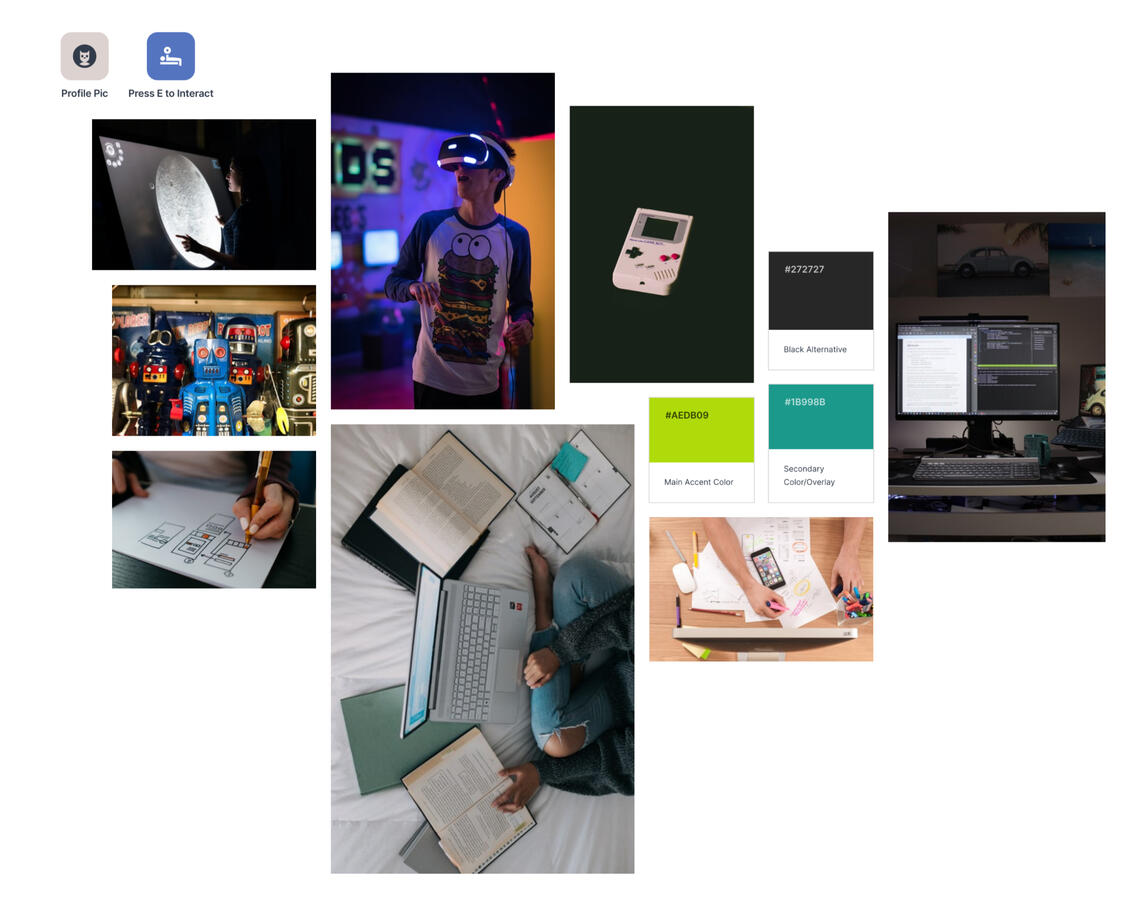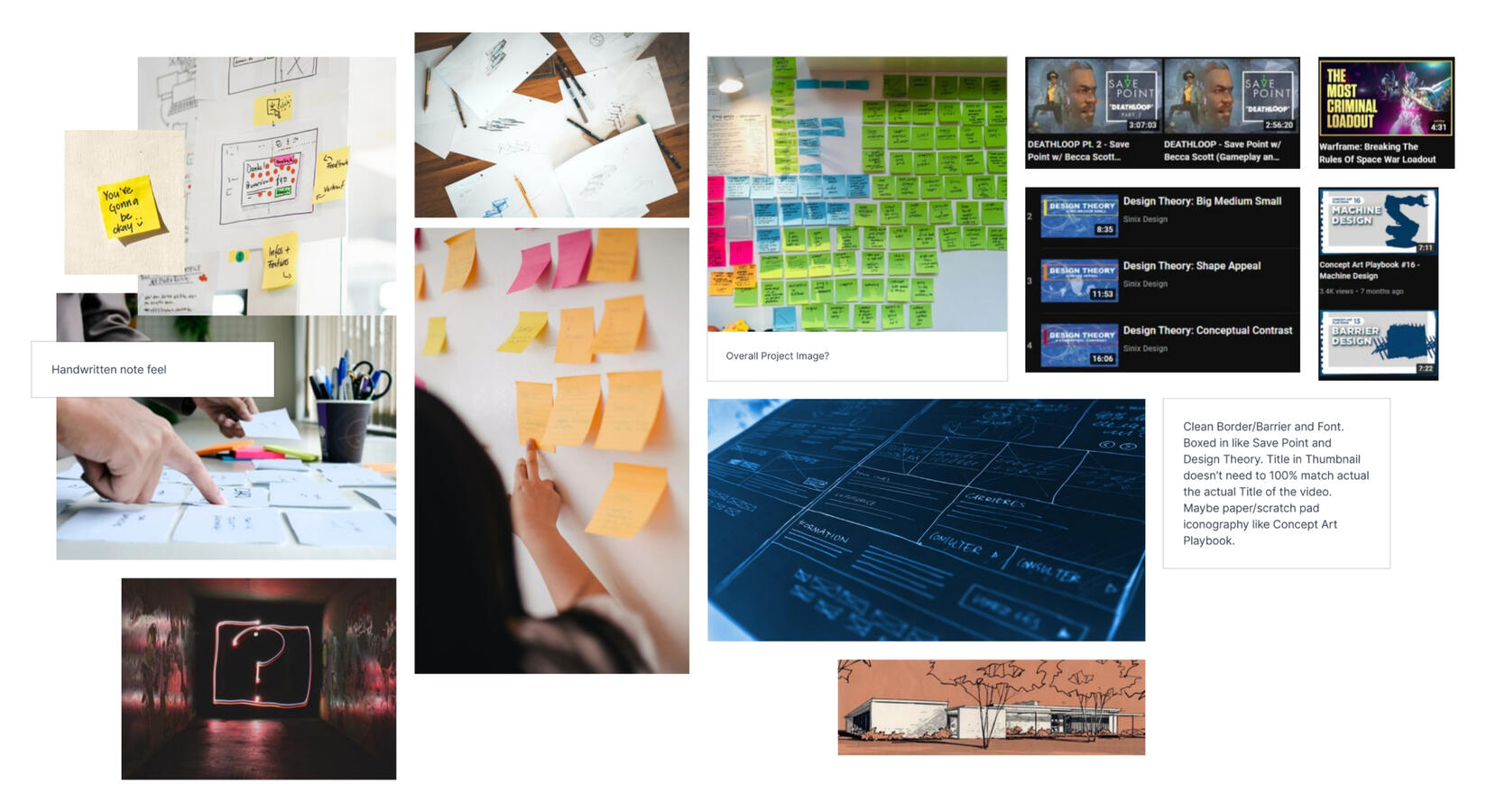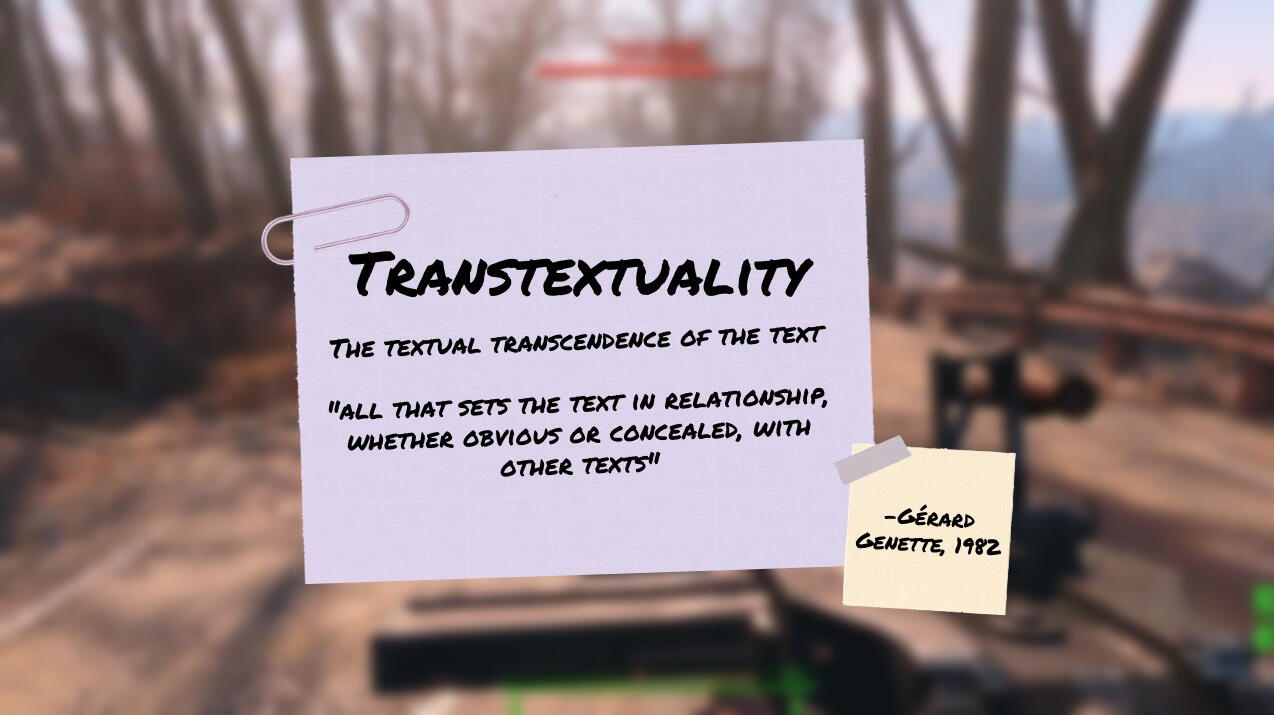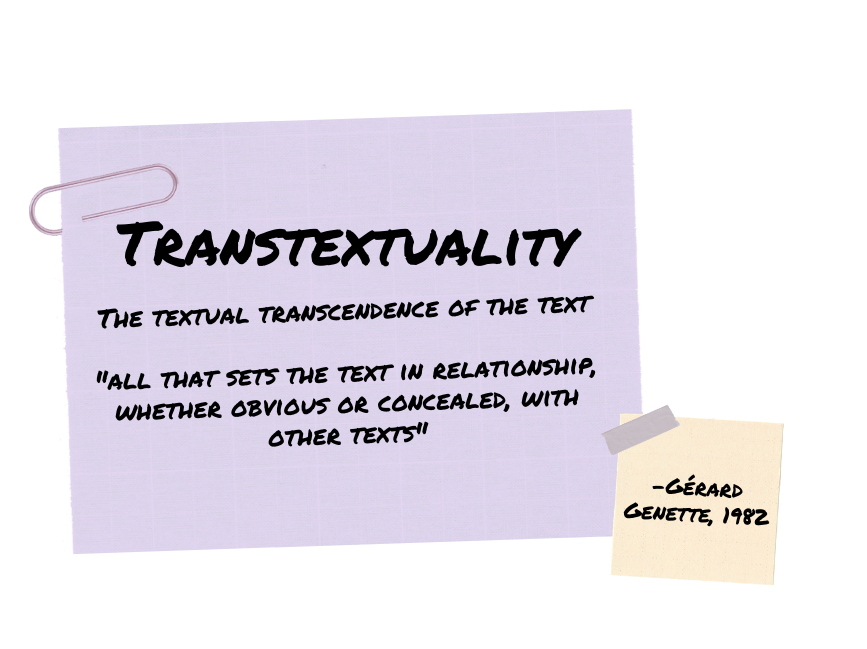Press E to Interact
A video essay series created by Brittany Kopel for her graduating Capstone project. Description of the project and it's completion can be read below!

Icon by @viiolaceus
01
Project Description
This Capstone is the beginning of a series of Youtube video essays surrounding games and narrative structures called Press E to Interact. The Capstone was designed to allow me to showcase the critical media analysis skills ATEC taught me while also giving me space to explore video production and establish a series I could continue to produce research and content for post-graduation.
Press E to Interact as a series seeks to investigate and research a singular thesis across multiple video essays. The thesis being explored in the video essays is that video games are inherently paratextual in a way other media isn't. Each video features a different video game and the lore artifacts within the game. Early videos serve the purpose of setting the foundation and establishing what kinds of mechanics and game elements need to be included and how already existing academic frameworks fit into the research. Later videos will focus on answering questions that have arisen during the course of investigating the thesis and potentially adjusting the lens in which the research is being analyzed.
02
Project Purpose
The core purpose of the project is to explore the thesis mentioned above, potentially with the intent to use it as a Masters thesis.
I believe this research is important, because understanding how the various narrative elements in video games interact and work together can help us determine the most effective ways to use these narrative techniques or to analyze the ways in which these narratives impact the players who engage with them.
The second goal for the video essays is to explore an academic thesis in a much more conversational capacity and to encourage non-academics who are interested in video games to engage with the critical analyzation of the video games they love in a setting that is more welcoming and accessible.
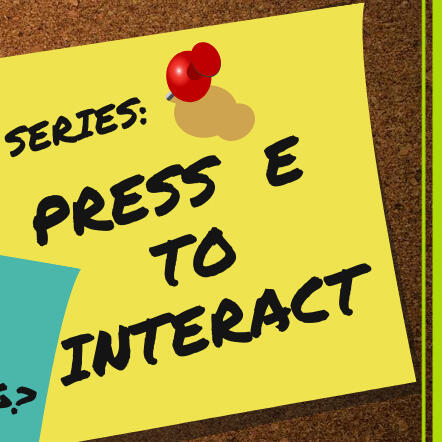
03
Gallery
Below are the moodboards and example tests created for the project to help ideate and design the graphics for the videos, such as the thumbnails, definitions slides, and citation cards.
04
Project Construction
While writing an essay is nothing new for me, this project had it's share of very unique problems and requirements to figure out and overcome. While I did do a little bit of planning and organizing, mostly in regards to choosing which games I would focus on early on and during the Capstone semester, all of the work for the project was done between September and December. This ended up being a lot of work, especially because I'd only had a little bit of experience with video editing and production prior to this semester.
An unexpected trial was figuring out how to convert my essays into scripts. Writing for reading and writing for speaking are very different things! But I found that it was excellent practice to have even if you never plan for your essay to be read out loud. It helped me to simplify how I wrote, which significantly helped with clarity! I also was unfamiliar with script reading, and had to learn how to read the essay in a way that sounded natural and entertaining.
Aside from that, I had a host of responsibilities that I had to accomplish for this project to be ready besides the writing of the essay and the editing of the video.
Because my video essays were all about video games, I couldn't really rely on stock footage and had to film and record all of my own footage. For the introduction, which doesn't focus on any singular game, I had to record for around 8 games total alone.
I also had to learn how to edit and enhance my audio recordings and learn what background music was allowed for creative commons.
I had to create a Youtube creator account and set up the settings. I had to research the metadata (title/description/tags/etc) that would best advertise and work for my videos.
I had to design and plan my Youtube brand, as I didn't want the videos to be directly associated with my personal Youtube.
And lastly, I had to learn the proper way to record gameplay for video editing usage and how to properly export a video for Youtube without killing your PC.
05
Future Updates
Future installments to the Press E to Interact series will be posted on Youtube! The current plan is to post about a video a month. So make sure to subscribe if your interested!
I also have the plan to produce other videos not part of this series. Topics may include:
Close-readings and critiques of games I've played and enjoyed
Video essays about current topics through the lens of video games and their narratives
Videos covering the progress of any games I'm developing (and can talk about, of course!)
So keep an eye out if any of those topics interest you!
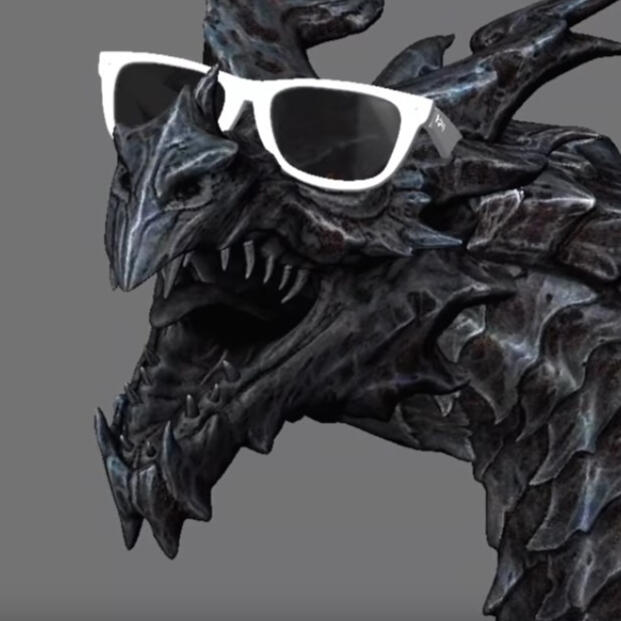
© AvaZope and Brittany Kopel. All rights reserved.
04
Introduction Video Essay/Script
This video is both the introduction to and project statement for a longer series of videos about video game narratives but also its my senior capstone project, so forgive my little, uh, tangent introduction! Hi, I’m AvaZope, obviously, given that, it’s... you know, the channel name... but also Brittany Kopel, a recently graduated critical media studies scholar with a focus in video games and video game narratives. With that out of the way, let’s get right into the actual video.
This video series, which I’m calling ‘Press E to Interact’ has the goal of reading, analyzing and contextualizing the content of collectible lore artifacts within video games. It aims to engage with the concepts of traditional literary and media analysis techniques as they can be applied to narrative design in games. Each video will aim to accomplish two things:
1) Explore how a player ingests and responds to lore that is delivered via lore collectibles compared to other narrative techniques. And 2) Explore an overall series’ thesis through a different game and a set of its lore collectibles- the thesis being, broadly, that games are inherently paratextual in a way other media isn’t.
These videos are intended to be like a conversation- a discussion, if you will. I have a thesis and I’m trying- hoping- to prove it. It may change as I make these videos! But I also think these are good discussions to be having in a more casual space. Game studies are often either very technical or very high academic theory. One is useful for the actual construction of games but not so much the how and why that construction could be understood and improved upon. But then the other is incredibly inaccessible to the average person, making it borderline useless outside of academic spaces. My hope is that these videos provide a sort of middle ground between the academic theory and the technical theory of game design- mostly as they pertain to narrative.
So, before we get into the nitty gritty of how we’re going to be classifying what collectibles or readables in video games count for this project, lets first take a second to get some basic literary analysis background information out of the way so we’re all on the same page. Hopefully without pissing off some more traditionalist academics in the process. Basically, I’m going to throw some theoretical frameworks for analyzing media and narrative at y’all and then speedrun through the basics of what doing a close reading is. Ready? OK.
So, first off: all of the terminology we use in these theories sort of revolve around or at least originate from literary analysis. All of our terms are riffed from or inspired by how we talk about books. So, when you’re doing a “reading”, you’re basically just consuming the “text”- or the media- in question. However, it’s meant to be consumed. Read, watched, played, and so forth. Earlier I mentioned the term, “paratextual”. Paratextuality is a subtype of Transtextuality: which is a broader theoretical framework for literary analysis originally coined by Gérard Genette in 1982. This framework is intended to explore the ways in which different but related texts inform one another and how they influence the way the reader interprets a text. Traditionally, paratextuality refers to the writings or media that surround a text. Things like a movie’s title or a book’s dedication or a T.V show’s episode name are considered the peritext, while elements like interviews, authorial commentary or discussions and other, like, post-published insight is referred to as the epitext.
In regards to video games however, the definition of paratextuality has had to have been broadened significantly. One of the first ways we saw it expand was when academics like Mia Consalvo, back in 2007, specifically began to investigate the unique impact that epitext such as walkthroughs and guide reviews have on how a player experiences the video game in comparison to how, say, a review on the back cover of a book influences how someone reads it. But many have also suggested that this wasn’t broad enough- and that it explicitly neglects to review the paratexts within the game itself. Is a loading screen part of the game’s narrative? What about its character menu? What about tutorials and tips?
And why exactly does this matter? When you sit down to watch a movie, you’re not engaging with the 1s and 0s and encoded data that put the video and audio up on the screen. You’re watching the movie. They’re always there, but never really considered in this type of analysis because they go unseen. But you, the player, are responsible for driving the experience of the video game you’re playing. You do have to actively engage with those 1s and 0s and navigational systems. And so, it’s important to look at how developers can implement these systems to not only do what they need to do but perhaps even add to the player’s overall experience. In short, paratextuality in games shouldn’t just refer to all the stuff that surrounds a game but also the various pieces inside of the game that aren’t themselves part of the central text- the plot, the main quest, the objectives, you know- but that do influence the player’s overall interaction with the game. And by doing so, we can change how we think about designing the various bits and pieces that flesh out a game world and make it worth interacting with long enough to see the main text through.
So- okay. That was a lot dense shit I did my best to uh, de-densify. It’s worth noting that this analysis doesn’t specifically apply to a game’s narrative or plot- so far what we’ve discussed is just a framework for analyzing the whole game as a piece of media. But applying that framework to the narrative elements and systems within a game isn’t hard- in theory. Part of what this thesis is arguing is that there is a form of paratext unique to games. Something that’s not peritext nor epitext; not something that doesn’t come before or after but rather is a supplementary text that exists alongside, at the same time as, the central text. Games with very limited or linear plots or a limited story may have fewer paratexts within them- but games with side-quests, environmental storytelling, or narrative-centric collectible items? Now we’re getting warmer. But what does or does not qualify as a paratext instead of just... central text? And further, what kinds of paratexts will this series be analyzing?
Just kidding, one more theory definition. It’s not really a literary theory- hell it’s not even a media analyzation theory, really? Epiphenomenon. It describes a secondary phenomenon that occurs alongside or in parallel to a primary phenomenon. It’s a term that you mostly see applied to the sciences- like medicine or psychology. But it was briefly used by film and T.V academics to describe paratextual elements like reviews, recaps, and fan-works before just... calling them paratextual again after Jonathan Gray re-introduced the term around 2010. And it’s not that I’m wanting to follow in their footsteps here- I don’t want to talk about external paratexts for video games. But I do think that the concept of epiphenomenon succinctly describes the relation that non-primary narrative elements and systems within a game have to the central, primary narrative.
When I say non-primary, what I mean is, “not necessary for beating the game”, which is sort of the accepted threshold for, “you’ve consumed this media fully” for video games. The problem with this statement- well, it’s less problem and more complication- is that ‘beating the game’ can look WILDLY different between players. If someone gets all 26 endings of Neir Automata and someone else only gets ending E (or 5)*- you'd technically say both of them played the same game... but did they? Did they really? It’s not unexpected for people to watch a movie or read a book and take away different interpretations of it. But these different interpretations are at least based off of the same content. With video games, all players experience the same central content but beyond that? It’s kind of the wild west.
And all of that optional content matters. It's not even just a narrative thing either- if you skip a side-quest, sure the most obvious thing is that you’re missing out on a story piece that could inform how you experience the rest of the narrative. But you might also miss out on a piece of gear or a spell or something that makes a future boss way easier. Like, if you skip this quest- a boss that was a push-over, easy to forget enemy for your friend could instead be your biggest rival. This will, in turn, impact what sort of significance that you place on that boss within the context of the rest of the game.
So. OK. For real this time- my classifications. What are they? Well, first, I’m only looking at objects, sometimes referred to as ‘readables’ in-industry, that the player can interact with during the game that exist as in-universe artifacts. Meaning- items that the player character is actually able to engage with as well. So, this means no sprawling codexes- sorry Bioware- no hints or guides within menus, and no god-voice exposition narration. Then, at least for now, I’m narrowing this window even further by specifically only considering readables that are also collectibles.
Why? Well, for a couple of reasons. Firstly, I want to consider how this kind of delivery for lore influences the way a player responds to or ingests it. These are objects that the protagonist is picking up and engaging with in the game. It’s not magical, contextual knowledge the player has all for themselves- it's information the player knows the protagonist has also learned. How does this influence what the player does with this new information? How and when is it better to use these objects to tell the player something about the world that they’re playing in instead of a tooltip or a codex entry or loading screen blurb?
Secondly, I want to investigate these items as collectibles. Collectibles are often discussed as something that’s either designed well and interact directly with other facets of the game or something that’s put into games to pad a player’s playtime and ultimately provide no substance to the game. And yes, this means eventually we’ll have to have the discussion about collectibles, filler content, and achievement chasing. But ultimately, what I’m hoping to answer going forward is: How do narrative-oriented collectibles work into this discussion?
So, to summarize, I’m going to be making a series of videos, each featuring a different video game and set of collectibles within that game to analyze and investigate how those collectible objects are or are not uniquely paratextual. I’ll also likely be focusing on a specific usage for each video- for instance, the first video I have written and plan to upload in the coming weeks focuses on Prey 2017 and how collectible readables can help establish a game’s setting. As the series continues, I may branch out to cover different kinds of game elements to see if they fall under this paratextual umbrella I’m trying to explore.
And again, these videos are meant to be discussions. I welcome your thoughts and opinions on the topic! My thesis may change depending on what we discover. Either way, I hope these will be as interesting and engaging for you to watch as they are for me to research and write. If you’re interested in following along and seeing how the thesis develops, or potentially seeing any other videos I make that aren’t directly involved with this series, subscribe to my channel! Anyways, thanks for watching, and hope to chat with you all soon!
© AvaZope and Brittany Kopel. All rights reserved.
